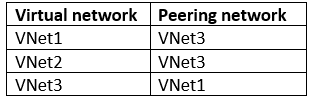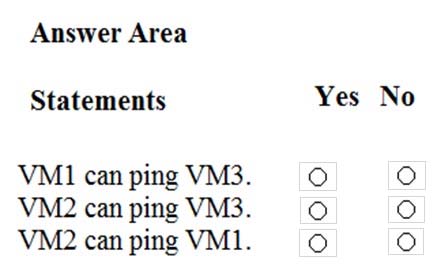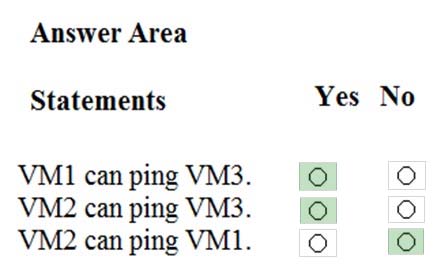

HOTSPOT -
You have an Azure subscription named Subscription1. Subscription1 contains the virtual networks in the following table:
Subscription1 contains the virtual machines in the following table:
The firewalls on all the virtual machines are configured to allow all ICMP traffic.
You add the peerings in the following table:
For each of the following statements, select Yes if the statement is true. Otherwise, select No.
NOTE: Each correct selection is worth one point.
Hot Area:

looker
Highly Voted 5 years, 7 months agopiotr
5 years, 6 months agoJasonYin
5 years, 6 months agobootyholeman
5 years, 3 months agobootyholeman
5 years, 3 months agobootyholeman
5 years, 3 months agomoglie
Highly Voted 5 years, 6 months agomacco455
4 years, 9 months agoOsimIndia
4 years, 4 months agoArio
Most Recent 3 years, 8 months agoazurecert2021
4 years, 4 months agoarunpaul
4 years, 2 months agoNG123
4 years, 7 months agoMrMohan
4 years, 7 months agoMMohammad
4 years, 8 months agogroy
4 years, 8 months agoAmmugaa
4 years, 8 months ago[Removed]
4 years, 8 months agoJitheshT
4 years, 9 months agoercank
4 years, 9 months agoYu001
4 years, 9 months agoKamal_SriLanka
4 years, 9 months agognoamchomsky
4 years, 9 months agoAusias18
4 years, 9 months agoesnecho
4 years, 10 months ago